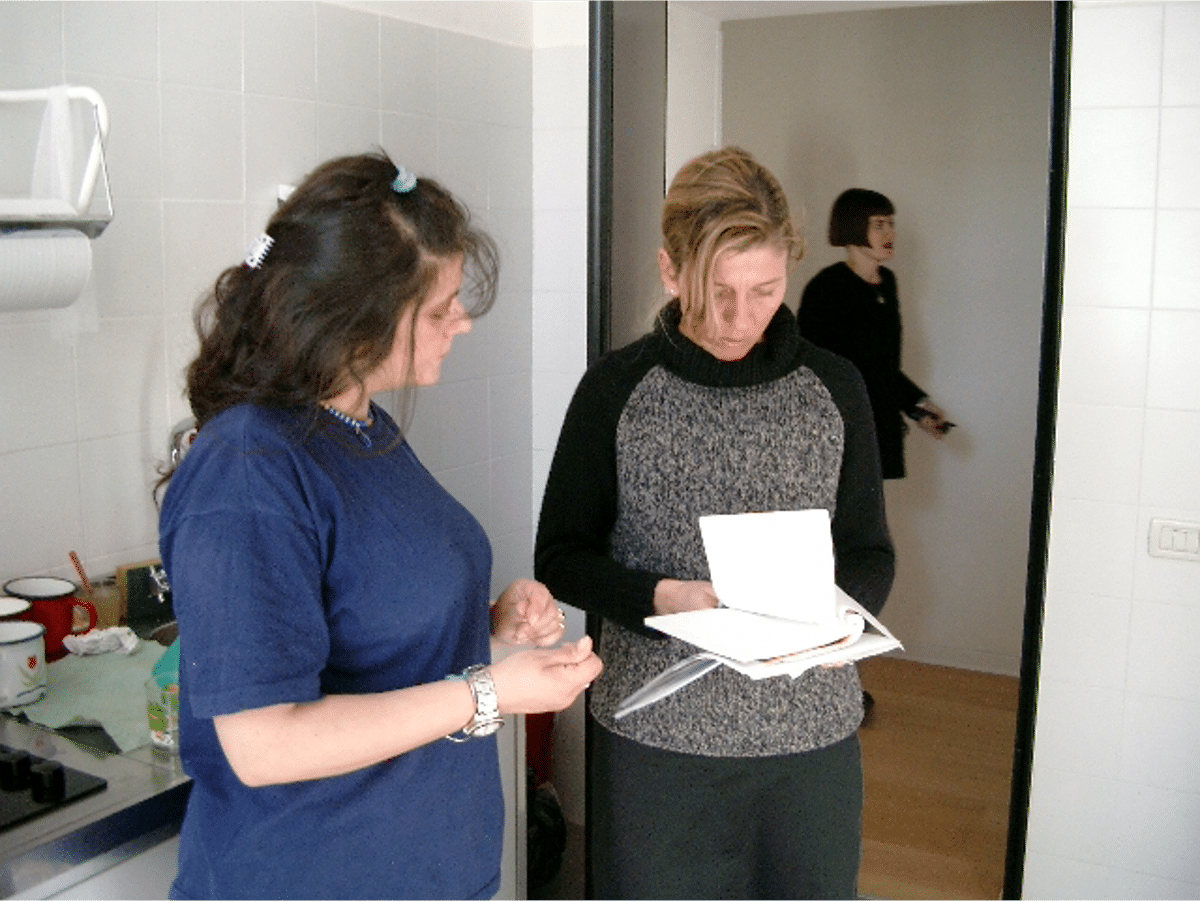A Proposal for the Introduction of the “Trieste Method” of Mental Health Care in Scotland
S.P. Sashidharan, Mark S. Smith, Roberto Mezzina
2020
This is a proposal to introduce the “Trieste model” of mental health care in Scotland, initially as a pilot project in Glasgow.
Background
There is increasing evidence that current models of mental health care in the UK are failing. The development of community mental health services has stagnated over many years and, in most places, has led to fragmentation and discontinuity of care. There are also major concerns about the overall quality of care and patient safety in mental health. For example, a report by the Parliamentary and Health Service Ombudsman recently found that vulnerable patients with mental health conditions are being badly let down by the National Health Service, causing them and their families needless suffering and distress [i]. Another parliamentary committee noted that most young people with mental health conditions do not receive the treatment they need [ii]. A recent survey of European Union member countries found that 38.2% (approximately 165 million people) met criteria for a psychiatric disorder, with fewer than one-third receiving any treatment at all [iii]. There is general agreement that the current Community Mental Health Team model of care is “in need of fundamental transformation and modernisation” [iv].
The situation in Scotland is unlikely to be very different. The lack of data on effectiveness and quality of mental health care in Scotland makes it difficult to draw firm conclusions on how resources are being used in community mental health services and what difference they are making or to assess how well they are doing. A review of mental health services in Scotland by Audit Scotland in 2009 found several areas of concern, including variable availability of services, long waiting lists (especially for children), barriers to care for socially excluded communities, crisis access and out of hours services, lack of integrated care and difficulties in transition between services [v]. Although there have been a number of positive developments in terms of mental health policy and continuing of shift in resources from institutional care models to community mental health services in Scotland over the years, many aspects of current services are still falling short of optimum care [vi]. Moreover, the gradual shift to mental health in the community has to date largely excluded children and young adults. Research indicates that 20% of adolescents may experience a mental health problem in any given year [vii] and that 50% of mental health problems are established by age 14 and 75% by age 24 [viii]. There are several national reviews into aspects of mental health care (forensic mental health, mental health law, mental health in prisons) currently under way as part of addressing the inadequacies in care and treatment and improving the current mental health system.
Glasgow is the biggest city in Scotland with unique challenges in terms of health and wellbeing, with poorer physical and mental health, and higher rates of premature death, sometimes described as the “Glasgow Effect” [ix]. Glasgow also has by far the highest rate of drug-related deaths in Europe – and this is continuing to rise – according to the National Records of Scotland and widely reported in the media [x]. The comorbidity of mental illness and substance abuse, leading to the widespread phenomenon of “self-medicating”, is well documented [xi], [xii]. Health disparities, including in mental health and wellbeing are greatest in Glasgow and mental health indicators demonstrate that across almost all of the indicators examined, Greater Glasgow and Clyde performs less well than Scotland as a whole [xiii].
The purpose of this proposal summary is to introduce a strategy to improve the outcomes of mental health care and treatment in Scotland. This is based on the community mental health model pioneered in Trieste, Italy, and emulated by mental health services in more than 30 countries, including NHS Trusts in Wales and the North of England [xiv], [xv], [xvi]. Why not Scotland? According to the World Health Organisation (WHO), the “Trieste model” of psychiatry is one of the most progressive and successful mental-health treatment systems in the world.
Our aim is to first develop a mental health centre in Glasgow, as a one-year pilot project, based on the “whole person / whole community,” inclusion and shared social responsibility principles of the Trieste model. We hope that this innovative and cost-effective community mental health system can be scaled up and made available across Scotland.
Guiding principles
- Mental health care in Scotland should be more inclusive and available to all those who need them.
- People with mental health problems should have increased choice in terms of care and treatment options and they should be at the centre of mental health care.
- Families and carers should be included in care and treatment.
- As far as possible all mental health care must be community-based with quick and easy access, and all care should be individualized and aim to ensure social inclusion.
- Treatments based not only on the management of conditions, but also on the individual’s whole-life, long-term recovery and re-integration into the community.
- The basic rights of people with mental health problems should be prioritised in all decisions concerning care and treatment and all efforts made to reduce and eliminate coercive treatments.
Trieste Model: What can be accomplished
In the 1970s, mental health visionary Franco Basaglia began a transformative mental health services in Trieste, a city of about 205,000 people. Basaglia’s ideas were revolutionary in their time: to respect the dignity and freedom of the mentally ill; their right to live as citizens in the community; and the enormous therapeutic value of engaging them in its daily meaningful activities and possibly a productive social role. The methods and principles Basaglia developed, and which were subsequently adopted as central themes in mental health services in Trieste, have provide a model for what is now broadly agreed to constitute good mental health care.
The Trieste model is essentially a system of social psychiatry, interlinked to the community as it relates to the individual. At its core is the 24-hour Community Mental Health Centre (CMHC), the main point of entry into the system. This is the hub for admission, intake, individual and group treatments, psychotherapy, acute psychiatry, social connections, prevention, outreach, family support, and medication/prescription dispensing. There is a small number of beds (usually 6/8) in each CMHC (catchment population of 60,000) for short crisis care or emergency stays, or for respite for families. In Trieste, there are currently four CMHCs for a population of 235,000 (1/60,000). It is from these centres that treatment/rehabilitation/re-integration links are developed to other health and welfare services and institutions (including courts and prisons) and into a broad range of community support networks. This includes local GPs, educational establishments, employers, job training, peer support, family groups and community agencies. Community assets are utilised to promote wellness and health through sports clubs, theatre, arts, music and other cultural groups, etc. A key commitment is to develop long-term social, recreational and job opportunities and to provide therapeutic, social support and rehabilitation and ensure their continuity. The Trieste approach allows individuals to be a central part in decision making with complete control over their own recovery. Networking with other community services ensures that mental health care is a fundamental component of community care.
Individual’s needs are assessed on the basis of their personal story/history – not the disorder or diagnosis. All aspects of the person’s life are explored and assessed – from social and family relations to living conditions and other life problems. This is achieved in a partnership in which service users and service providers explore solutions together. Personal, long-term relationships are built on the principles of trust and human dignity with therapists/care workers and this is central to the recovery process.
In Trieste anyone with a mental health crisis or a psychotic episode can directly access the mental health team from the CMHC. The focus of treatment is not merely the management of mental illness, but rather on the individual’s whole-life long-term recovery and re-integration into the community. Users are encouraged to explore their aspirations as a basis for a personalized program or a “life project.” These are fostered through a number of personal budgets involving NGOs (social cooperatives) in order to support individuals in their daily life (e.g. housing, education and work, social inclusion) and to address their needs and aims.
Uniquely, the CMHC – like the pilot we propose in Glasgow – operates a 24/7, walk-in policy. The low eligibility criteria to enter the service for treatment reduces stigma and also permits self-referral, along with referrals from local GPs and social workers. Users are not considered patients, but guests at the centre. CMHCs are designed as informal but safe spaces, like a social centre, where users come and go as they wish, dropping in for lunch to chat with friends or family members, meet with psychiatrists or therapists, get medication, or simply hang out. There are no locked doors and no restraints.
It is not possible to evaluate the effectiveness of single interventions (i.e., psychoeducational, rehabilitative, psychotherapeutic), because these are interwoven in the ‘‘whole system’’ approach. However, the effectiveness of the community mental health centre services has been demonstrated as positive outcomes in terms of:
- Hospitalization rates
- Compulsory treatment rates
- Forensic patient rates
- Suicide rates
- Re-admission rates
- Use of the individual care and recovery projects / plans, guests’ compliance and service usage
- Effective job placement
Involuntary treatment is a rarity in Trieste. In 2018, 18 patients were treated against their will, out of the almost 5,000 people who received services. Meanwhile, suicides in the city have halved over a 20-year period. Over the last 25 years, Trieste’s mental health system has been adopted in the neighbouring region of Friuli Venezia Giulia, which has a population of around 1.2 million. There, the model has produced comparable outcomes in terms of low rates of hospitalization, low compulsory treatment rates, increased job placement, a low number of forensic patients, and a decreasing suicide rate.
It is worth noting that Basaglia’s whole person/whole community methods and organising principles are also applied to problems of addiction and mental illness comorbidity in Trieste, and this has produced similarly positive results. There is every reason to believe it can have similar successes in Glasgow and ameliorate the city’s worsening drug problem.
Trieste’s Department of Mental Health was recognized as an experimental pilot area for mental health in 1974 by WHO and became a WHO Collaborating Centre for Research and Training (in 2018 it was reconfirmed in this role). It is tasked with helping WHO guide other countries in de-institutionalization and the development of integrated community mental health services. Trieste’s model for community-based mental health centres can now be found in more than 30 countries in Europe, Asia and South America, as well as in Australia and New Zealand.
Transferability to Glasgow
Improving mental health is a priority for the Scottish Government, which regards mental illness as a major public health challenge. It is already committed to strengthening the support available in communities and schools, introducing mental health first-aid training for local authorities, and ensuring every secondary school has access to a counselling service by September 2020.
A recent report by the Glasgow Centre for Population Health examined more than 51 adult indicators of mental health and wellbeing. It found that the NHS Greater Glasgow & Clyde region consistently performed worse than Scotland as a whole, and was particularly notable for depression, anxiety and the drug and alcohol indicators [xvii]. Based on its successes elsewhere, we believe the introduction of a Trieste-inspired community mental health care system in Glasgow could have an enormous impact on treatment outcomes for people with mental illness in the city.
Glasgow already has a strong sense of community and culture, a number of significant community organisations and health initiatives and a wide range of social, cultural and recreational services, many of which could be linked through a CMHC. The idea is not to replicate what is being done in Trieste, but to adapt it to Glasgow/Scottish needs and accomplish the same kind of successes.
Support from the Joshi Foundation: A Personal landscape
This proposal is supported by the Joshi Foundation, Professor SP Sashidharan, of the Institute of Health and Wellbeing, University of Glasgow, and Dr Roberto Mezzina, the former director of Trieste’s Department of Mental Health and current director of the WHO Collaborating Centre for Research and Training in Trieste.
The Joshi Foundation was established by author and former Herald journalist Mark S. Smith and his wife, Cath, after losing their 24-year-old daughter in January 2020 to mental illness and the failings of the Scottish mental health system. They describe themselves as “parents trying to right a wrong.” The Joshi Foundation’s Board of Trustees will also include Professor SP Sashidharan, Professor Scott McMeekin, Vice Dean of the School of Computing and Engineering at Glasgow Caledonian University, and Nick Naddell, Partner with Scottish law firm Burness Paull.
The purpose of the foundation is to support the founding of a pilot Trieste-style Community Mental Health Centre in Glasgow. It will also serve to lobby the government to enhance and improve Scotland’s approach to mental health care and to engage partner organizations, local charities, and industry champions within communities to forge a diverse campaign to encourage people to think about mental health holistically. At the same time, it aims to raise public awareness about mental health, and the need for more person-centred treatments with better long-term outcomes for the individual and the communities in which they live.
The Joshi Foundation will work to help to adapt and embed the service into the current system, helping to establish useful functional links with the public service network, as well as other social and cultural organizations. The idea is not just to provide an isolated alternative, but an integrated innovation that would prove to be successful within the framework of existing mainstream mental health services. At the very least, we believe it will provide an alternative viewpoint and support a change in current routines and practices, along with creating a better focus on the individual’s pathway of care.
References:
i https://www.ombudsman.org.uk/sites/default/files/page/Maintaining%20momentum-driving%20improvements%20in%20mental%20health%20care-%20Report-Final-Web-Accessible.pdf
ii https://publications.parliament.uk/pa/cm201719/cmselect/cmpubacc/1593/1593.pdf iii Wittchen HU, Jacobi F, Rehm J, Gustavsson A, Svensson M, Jönsson B, Olesen J, Allgulander C, Alonso J, Faravelli C, Fratiglioni L, Jennum P, Lieb R, Maercker A, van Os J, Preisig M, Salvador-Carulla L, Simon R, Steinhausen HC.
iii The size and burden of mental disorders and other disorders of the brain in Europe 2010. Eur Neuropsychopharmacol. 2011 Sep; 21(9):655-79.
iv NHS England and NHS Improvement and the National Collaborating Central for Mental Health (2019) The Community Mental Health Framework for Adults and Older Adults. https://www.england.nhs.uk/wp-content/uploads/2019/09/community-mental-health-framework-for-adults-and-older-adults.pdf
v https://www.audit-scotland.gov.uk/docs/health/2009/nr_090514_mental_health.pdf
vi https://www.mentalhealth.org.uk/sites/default/files/Commitment%20One%20Report,%20January%202016.pdf
vii WHO (2003). Caring for children and adolescents with mental disorders: Setting WHO directions. Available at: http://www.who.int/mental_health/media/en/785.pdf
viii Kessler RC, Berglund P, Demler O, Jin R, Merikangas KR, Walters EE. (2005). Lifetime Prevalence and Age-of-Onset Distributions of DSM-IV Disorders in the National Comorbidity Survey Replication. Archives of General Psychiatry, 62 (6) pp. 593-602. doi:10.1001/archpsyc.62.6.593.
ix https://www.gcph.co.uk/assets/0000/0087/Investigating_a_Glasgow_Effect_for_web.pdf
x Lowther E and Brocklehurst S. Scotland’s drug death crisis in six charts. BBC News: 26 February 2020. Available at: https://www.bbc.com/news/uk-scotland-48853004
xi Bolton JM, Robinson J, Sareen J. Self-medication of mood disorders with alcohol and drugs in the National Epidemiologic Survey on Alcohol and Related Conditions. J Affect Disord. 2009 Jun;115(3):367-75.
xii Khantzian EJ. The self-medication hypothesis of addictive disorders: focus on heroin and cocaine dependence. Am J Psychiatry. 1985 Nov;142(11):1259-64.
xiii https://www.gcph.co.uk/assets/0000/2748/Mental_Health_in_Focus_15_11_11.pdf
xiv http://www.wales.nhs.uk/sitesplus/862/page/94896
xv https://imhcn.org/wp-content/uploads/TransformingMentalHealthConsultationMain2017WEB.pdf
xvi https://www.healthwatchyork.co.uk/wp-content/uploads/2017/08/Mental-Health-Strategy-final-draft-for-consultation-4-August-2017.pdf
xvii https://www.yumpu.com/en/document/read/28899044/section-3-inequalities-in-greater-glasgow-clyde





















